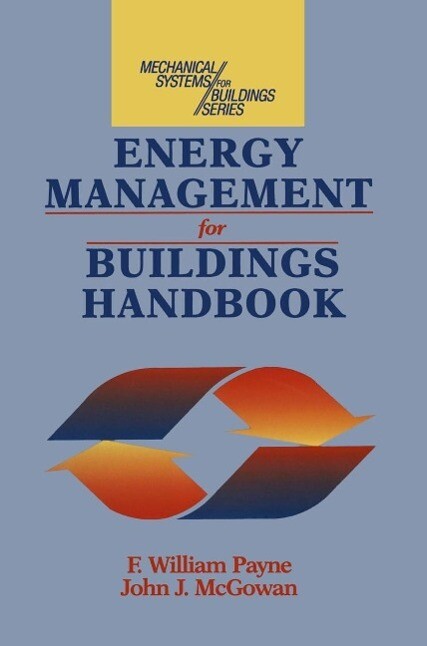
Sofort lieferbar (Download)
Zur Zeit liegt uns keine Inhaltsangabe vor.
Inhaltsverzeichnis
1 Automation Through Energy Management and Control Systems Where We Stand Today. - EMCS Industry and Market Overview. - Current Issues. - Education and Training. - User Satisfaction, Cost Savings, and Other Benefits. - Controls Standardization. - Design Integration. - Emerging Issues. - Trend to Electronic Local Loop Controls. - Increasing Complexity of Control Strategies. - Market Absorption of Innovation. - Utility and Communitywide Energy Monitoring and Control. - 2 10 Reasons Why Some Automation (EMC) Systems Do Not Meet Their Performance Goals. - 3 The First Step to a Successful EMC System: Develop an Initial Energy Management Plan. - The Initial Energy Management Plan. - Select Buildings to Be Studied. - Retaining a Consultant. - Conducting an Energy Audit. - Determine Energy Savings. - Consultant s Report. - Prioritize ECOs. - Finalize and Implement the Initial Plan. - 4 The Second Step: Develop and Implement the Final Energy Management Plan. - First Part. - Perform an EMC Systems Analysis. - Three Levels of EMC Systems. - Implement the Final Plan. - 5 Level I EMC System: Multifunction Supervisory and Demand Controllers. - Supervisory Load Controller. - Optimal Start/Stop Controller. - Demand Controller. - 6 Level II EMC System: Central Monitoring and Control System. - 7 Level III Automation System Technology. - Hardware Types. - Function Categories. - Computer. - Peripheral Devices. - Field Equipment. - Distributed Processing. - Data Transmission Links. - Software. - 8 Level III EMCS Hardware. - Computer Technology. - Peripherals. - Field Equipment. - Software. - Miscellaneous Cost Issues. - System Architecture. - 9 EMC System Functions and Applications. - Basic Functions. - Optimizing Functions. - Operational Functions. - Other Functions. - System and Equipment Applications. - 10 Direct Digital Control. -Definitions. - Benefits of DDC. - Adaptive DDC Control. - 11 EMCS Communications and Standardization. - DDC Interface Process. - 12 Designing a Level III EMC System. - Basic Selection Criteria. - Technology Issues. - Drawings. - 13 Specifying a Level III EMC System. - Major Specification Concerns. - Sample Specifications. - Detailed Specifications. - 14 EMC System Procurement, Installation, Fine-Tuning and Maintenance. - Obtaining Bids. - Contractor Selection. - Post Award Review. - Shop Drawing Review. - On-Site Debugging. - Fine-Tuning and Long-Term Considerations. - System Documentation. - System Maintenance. - 15 Tips on EMCS Specification, Vendor Selection, Operation. - Specifications. - Software. - Point Selection. - Configuration and Hardware. - Selecting a Vendor. - Installation. - Operation and Maintenance. - 16 Training the EMC System Staff. - 17 EMCS Program Management. - Program Management Components. - Program Management Functions. - 18 EMC System Guidelines for New Buildings. - 19 Life Cycle Costing. - Using the Payback Period Method. - Using Life Cycle Costing. - The Time Value of Money. - Investment Decision-Making. - Making Decisions for Alternate Investments. - Depreciation, Taxes, and the Tax Credit. - Life Cycle Cost Analysis Optimization. - 20 Case Study 1: Computing EMC System Energy Savings for a New Commercial Building. - 21 Case Study 2: Energy Management and Control Systems in Supermarkets. - 22 Case Study 3: Energy Management and Control Systems at Princeton University. - 23 Case Study 4: Automation @@@ Shedding a Little Light on Building Security. - Appendix A Software Dictionary. - Appendix B Abbreviations. - Appendix C Suppliers of Energy Management Systems Building Controls and Automation.
Produktdetails
Erscheinungsdatum
06. Dezember 2012
Sprache
englisch
Seitenanzahl
400
Dateigröße
31,39 MB
Autor/Autorin
F. William Payne, John J. McGowan
Verlag/Hersteller
Kopierschutz
mit Wasserzeichen versehen
Produktart
EBOOK
Dateiformat
PDF
ISBN
9781468466119
Entdecken Sie mehr
Bewertungen
0 Bewertungen
Es wurden noch keine Bewertungen abgegeben. Schreiben Sie die erste Bewertung zu "Energy Management and Control Systems Handbook" und helfen Sie damit anderen bei der Kaufentscheidung.







